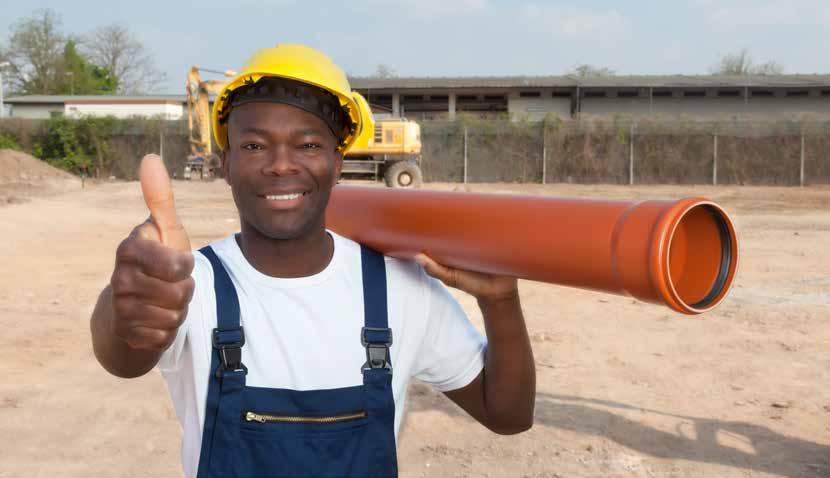PLASTIC PIPES
Plastic pipes surpass sewer needs As urbanisation increases, thermoplastic pipes have a vital role to play in developing modern sewer systems that can meet the needs of the communities they serve for 100 years or more.
M
aintaining functional and efficient water and sewerage networks requires an adherence to stringent design and product standards that extend the life of these vital assets. “It is therefore important to look at the various elements that go into developing and maintaining such a network and the important role plastic pipes play in ensuring the effectiveness of these systems,” says Ian Venter, technical manager, SAPPMA. For this reason, SAPPMA recently hosted a virtual Quality Workshop focusing on various aspects related to sewer systems.
Plastic pipes offer many benefits
“Water and sanitation infrastructure, alongside housing, are pressing priorities in South Africa today. Local and national government has a crucial role to play in uplifting communities by addressing inequality gaps and the implementation
42
SE PT /O CT 2020
of effective sewer and waste management systems for all its citizens – including the poorest of the poor,” Vollie Brink told workshop attendees. Brink is a professional registered civil engineer with 64 years’ experience as a wet services consultant. When installing pipelines for water and sewerage systems, he stressed that municipalities must ensure they adhere to engineering and product standards that deliver the best results, yet are practical and cost-effective. “PVC and HDPE pipes offer a solution that is long-lasting. Compared to steel and concrete, plastic pipes are well suited to labour-intensive construction techniques. Unlike with steel, there are no concerns about costly cathodic protection requirements when using plastic pipes,” he said. Alaster Goyns, who has been involved with many of the major outfall sewers in South Africa for over 40 years, echoed some of the benefits of plastic pipes.
Corrosion is one of the biggest issues facing sewers and can render them structurally unsound and no longer watertight. Traditionally, high-pressure pipelines were made from steel with coatings bonded to the steel pipe in order to protect them. On the other hand, sewers that were gravity pipelines of 300 mm and larger in diameter were traditionally made from concrete. “Under certain combinations of hydraulic performance and the effluent being conveyed, these traditional sewers systems are subject to biogenic corrosion due to the formation of hydrogen sulfide within the effluent and its subsequent release into the sewer atmosphere, where it is biologically converted into sulfuric acid. The latter then attacks the alkalinity of the pipe, causing it to deteriorate,” he explained. With aged sewers, rehabilitation is generally the preferred option, rather than replacement. Goyns stressed that it is important to bear in mind that these




















